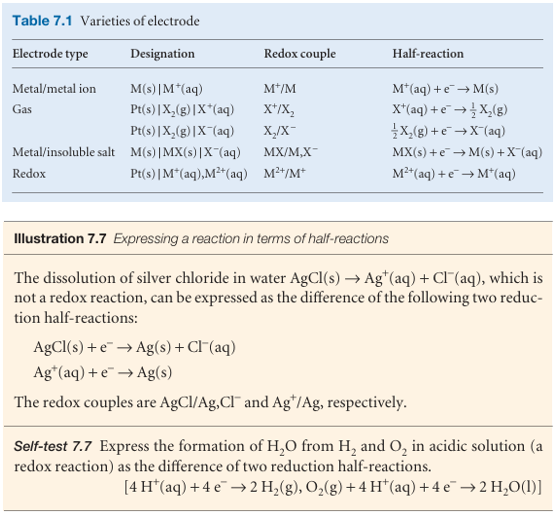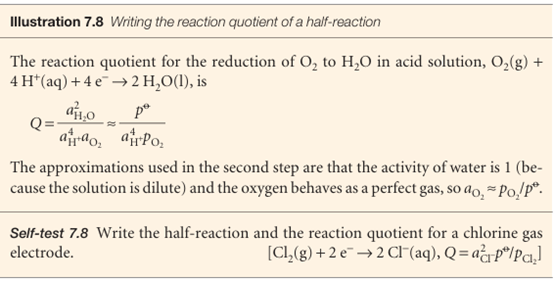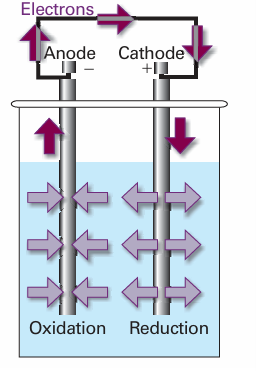
Half-reactions and electrodes
 المؤلف:
Peter Atkins، Julio de Paula
المؤلف:
Peter Atkins، Julio de Paula
 المصدر:
ATKINS PHYSICAL CHEMISTRY
المصدر:
ATKINS PHYSICAL CHEMISTRY
 الجزء والصفحة:
ص216-217
الجزء والصفحة:
ص216-217
 2025-11-17
2025-11-17
 42
42
Half-reactions and electrodes
It will be familiar from introductory chemistry courses that oxidation is the removal of electrons from a species, a reduction is the addition of electrons to a species, and a redox reaction is a reaction in which there is a transfer of electrons from one species to another. The electron transfer may be accompanied by other events, such as atom or ion transfer, but the net effect is electron transfer and hence a change in oxidation number of an element. The reducing agent (or ‘reductant’) is the electron donor; the oxidizing agent (or ‘oxidant’) is the electron acceptor. It should also be familiar that any redox reaction may be expressed as the difference of two reduction half reactions, which are conceptual reactions showing the gain of electrons. Even reactions that are not redox reactions may often be expressed as the difference of two reduction half-reactions. The reduced and oxidized species in a half-reaction form a redox couple. In general we write a couple as Ox/Red and the corresponding reduction half-reaction as
Ox+νe−→Red

We shall often find it useful to express the composition of an electrode compart ment in terms of the reaction quotient, Q, for the half-reaction. This quotient is defined like the reaction quotient for the overall reaction, but the electrons are ignored.

The reduction and oxidation processes responsible for the overall reaction in a cell are separated in space: oxidation takes place at one electrode and reduction takes place at the other. As the reaction proceeds, the electrons released in the oxidation Red1→ Ox1+νe−at one electrode travel through the external circuit and re-enter the cell through the other electrode. There they bring about reduction Ox2+νe−→Red2. The electrode at which oxidation occurs is called the anode; the electrode at which reduction occurs is called the cathode. In a galvanic cell, the cathode has a higher potential than the anode: the species undergoing reduction, Ox2, withdraws electrons from its electrode (the cathode, Fig. 7.11), so leaving a relative positive charge on it (corresponding to a high potential). At the anode, oxidation results in the transfer of electrons to the electrode, so giving it a relative negative charge (corresponding to a low potential).

Fig. 7.11When a spontaneous reaction takes place in a galvanic cell, electrons are deposited in one electrode (the site of oxidation, the anode) and collected from another (the site of reduction, the cathode), and so there is a net flow of current which can be used to do work. Note that the +sign of the cathode can be interpreted as indicating the electrode at which electrons enter the cell, and the − sign of the anode is where the electrons leave the cell.
 الاكثر قراءة في مواضيع عامة في الكيمياء الفيزيائية
الاكثر قراءة في مواضيع عامة في الكيمياء الفيزيائية
 اخر الاخبار
اخر الاخبار
اخبار العتبة العباسية المقدسة


